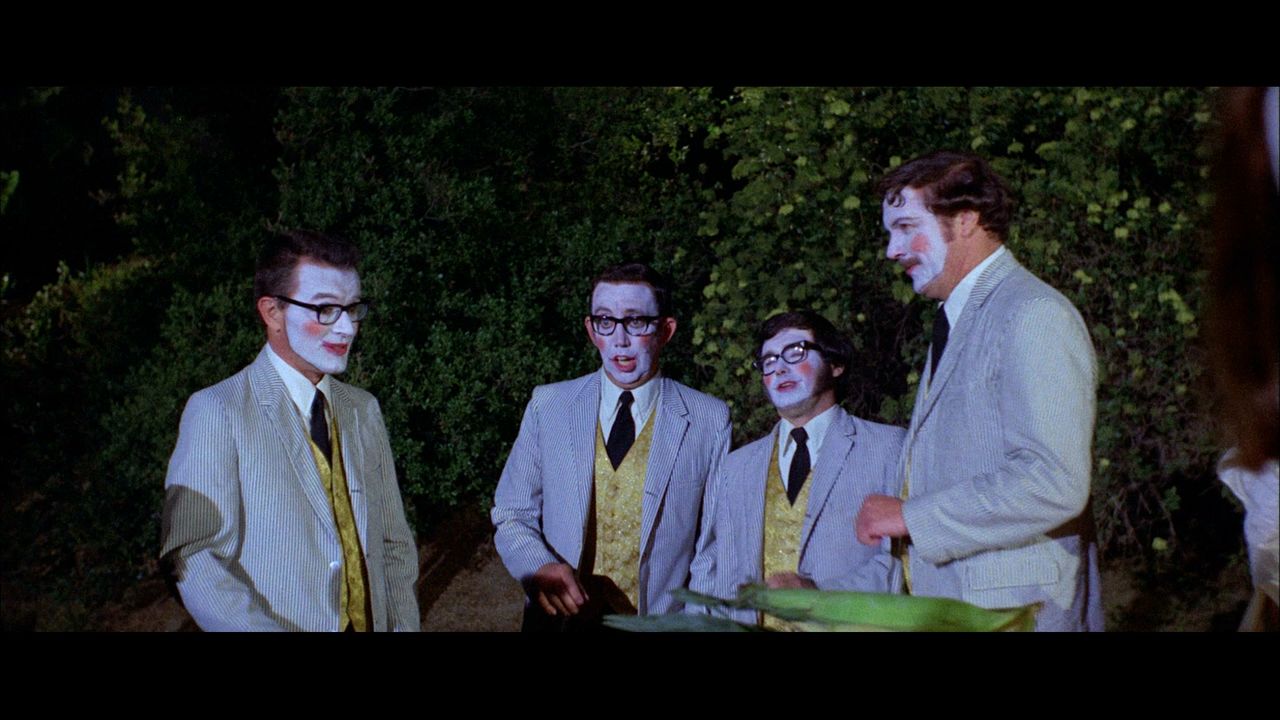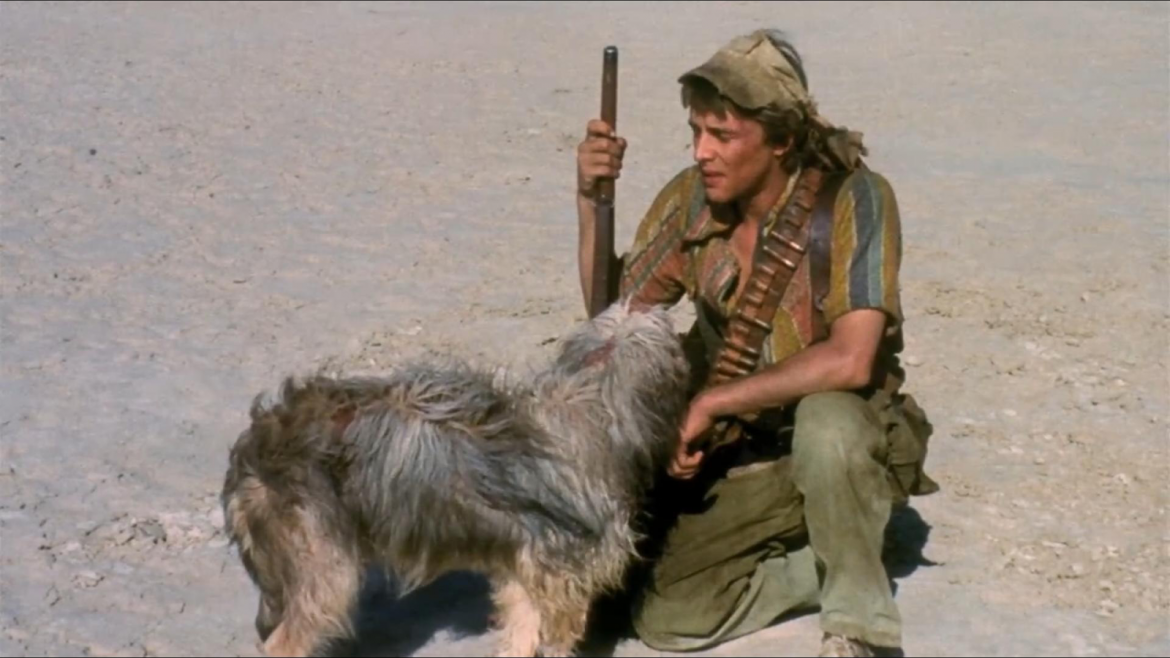In an online film community of which we are both members, my pal Liz Lerner suggested a novel and fascinating idea. For the entire month of September, we are watching and considering films from a specific, arbitrarily chosen year, attempting to locate their concerns, aesthetics, and quirks in the material conditions of their creation and examining what they might have to say to each other. The year we landed on is 1975.
Jaws. Barry Lyndon. Escape To Witch Mountain. Grey Gardens. Monty Python and the Holy Grail. One Flew Over The Cuckoo’s Nest. Nashville. The Rocky Horror Picture Show. Picnic at Hanging Rock. The Stepford Wives. Shivers. (These are just some of the ones I’ve seen.)
There are plenty of reasons to scoff at the notion that any one year’s filmic resume is illustrative of anything in particular. For one, some things may have been gestating for a while, only emerging in their final form at a particular moment for any number of extraneous reasons. For another, I don’t mean to suggest some reductive analysis that says, “Well, of course both Jaws and Nashville appeared in theaters: that was the year Space Mountain opened, and you can clearly see its influence on every film from 1975.”

That would be silly.
But there are throughlines, I’d posit. Certain approaches and attitudes tend to animate art at given moments in time, and viewing them through the lens of a particular year seems as valid as any other approach.
My mission for the month on this score is to chart some first-watches from 1975. I already watch Jaws all the time (and its sequels), and there’s no way I’m watching Rocky Horror again, because it is terrible. But, hopefully with some help, we’ll dive into 1975 and see what we find.
A quick glance at the events of 1975 reveal a pervasive unease and a world in transition. To rattle off only a few, this was the year that Watergate exploded and OPEC raised gas prices 10%, exacerbating the oil crisis of 1973. Squeaky Fromme tried to kill Gerald Ford, the Weather Underground detonated explosives in the State Department, the Red Army Faction was active in Berlin and Stockholm, and the IRA bombed the London Hilton. Papua New Guinea, Angola, Suriname, Cape Verde, São Tomé and Principe, The Comoros, and East Timor all declared independence from their colonial overseers, with often bloody results. The Vietnam War drew to something of a close with the Fall of Saigon, and the Cambodian Khmer Rouge nominally surrendered. 200,000 people died in China after the failure of the Banquio Dam. There’s a coup d’etat in Chad and the beginning of the Lebanese Civil War.
That’s heady stuff, a tectonic shift in social and global relations. On screen, it seems most reflected in the anxious dystopias, fraught insurgencies, and forced isolation narratives of things like 1975’s The Adventures of the Wilderness Family, Breakheart Pass, Death Race 2000, Dog Day Afternoon, and even something like Jeanne Dielman, 23 quai de Commerce, 1080 Bruxelles. There is a sense that things are falling apart, or already have.
Nowhere is this more true than with one of my 1975 first-watches, the entirely bananas Harlan Ellison adaptation A Boy and His Dog.

Starring Don Johnson — the Man Who Would Be Sonny Crockett, and who once made a surprisingly popular music video where he threw a child over a wall like a crazy wrestler, in service to a very poor song — and a very irritating, telekinetic dog named Blood, this is a strange and jarring film, but entirely of a piece with the year in which it appeared.
Simply put, A Boy and His Dog is the post-apocalyptic story of Don Johnson’s desperate attempts to get laid. In the film, “getting laid” is indistinguishable from “sexual assault,” either because that’s how things will be after the nukes go off or because it’s 1975 and that’s just how it was, because we, as humans, are fucking horrible.
In the future year of 2024, there isn’t much to go around, on any front. The only films that survive are softcore pornography, which men gather to watch in shantytowns. Don Johnson and Blood, the telekinetic dog, basically roam the countryside, sniffing around for food or women. (Hold onto to that line in your head.)

Eventually, Johnson descends to an underground world and A Boy and His Dog takes a remarkable turn to satirizing the bourgeois middle class, depicted here in clown makeup, presumably because they are clowns. These folks are concerned with continuing life below, not unlike the premise supposed at the end of Kubrick’s Dr. Strangelove. However, it’s reversed here: rather than the masculinist suggestion of a stacked ratio of nubile young women to dirty old men Strangelove envisions, it’s our protagonist who is restrained and hooked up to a sperm-sucking machine for procreative purposes, with surreal weddings performed at his bedside.

There’s a lot of misandry and fear that courses through this narrative, alongside the very 1975 worries about economic and resource privation. The film seems to deeply and uncritically sympathize with Johnson’s profound need to fuck somebody (though why homosexuality is out of bounds is never really clear), and it views with alarm the body horror aspect of his temporary subjugation. By the time the film lands on its closing laugh line, which Ellison despised, it doesn’t come as any real surprise. A Boy and His Dog has what we might generously call “issues with women”.
It’s been suggested to me that the emergence of “body horror” tropes — prominently featured here, but even more especially in David Cronenberg’s Shivers, another 1975 release — might reflect male anxieties about the emergence of the women’s movement and abortion specifically. That would make a certain amount of sense, though such themes date back at least to Mary Shelley’s Frankenstein. And indeed, Rosemary’s Baby appeared on the scene seven years prior, inculcating a generation in the idea that structures of power are very much at play where your reproductive system is concerned.
The difference in A Boy and His Dog is perspectival, and right there in the title: this is not a film about women. Like the curiously well-regarded One Flew Over The Cuckoo’s Nest, this is a film about the threats women pose to otherwise solid connections between men (and dogs).
In any case, several years before the first Mad Max, Don Johnson and Blood were making their way through the fraught landscape of the post-apocalypse, stealing supplies and grappling with collapse. This seems deeply resonant of the time it was made, the animating concerns of the people who made it and the audience they expected to attend. In the year of Watergate, perhaps, people might not be what they seem.

Over the course of the month, we’ll consider a few more. Next up: The Adventures of Sherlock Holmes’ Smarter Brother, an idiot comedy from the beloved and dearly departed Gene Wilder, and Cleopatra Jones and the Casino of Gold, a blaxploitation affair that fails to live up to its terrific title.
Got some more 1975 suggestions? Feel free to tell me in the comments.

